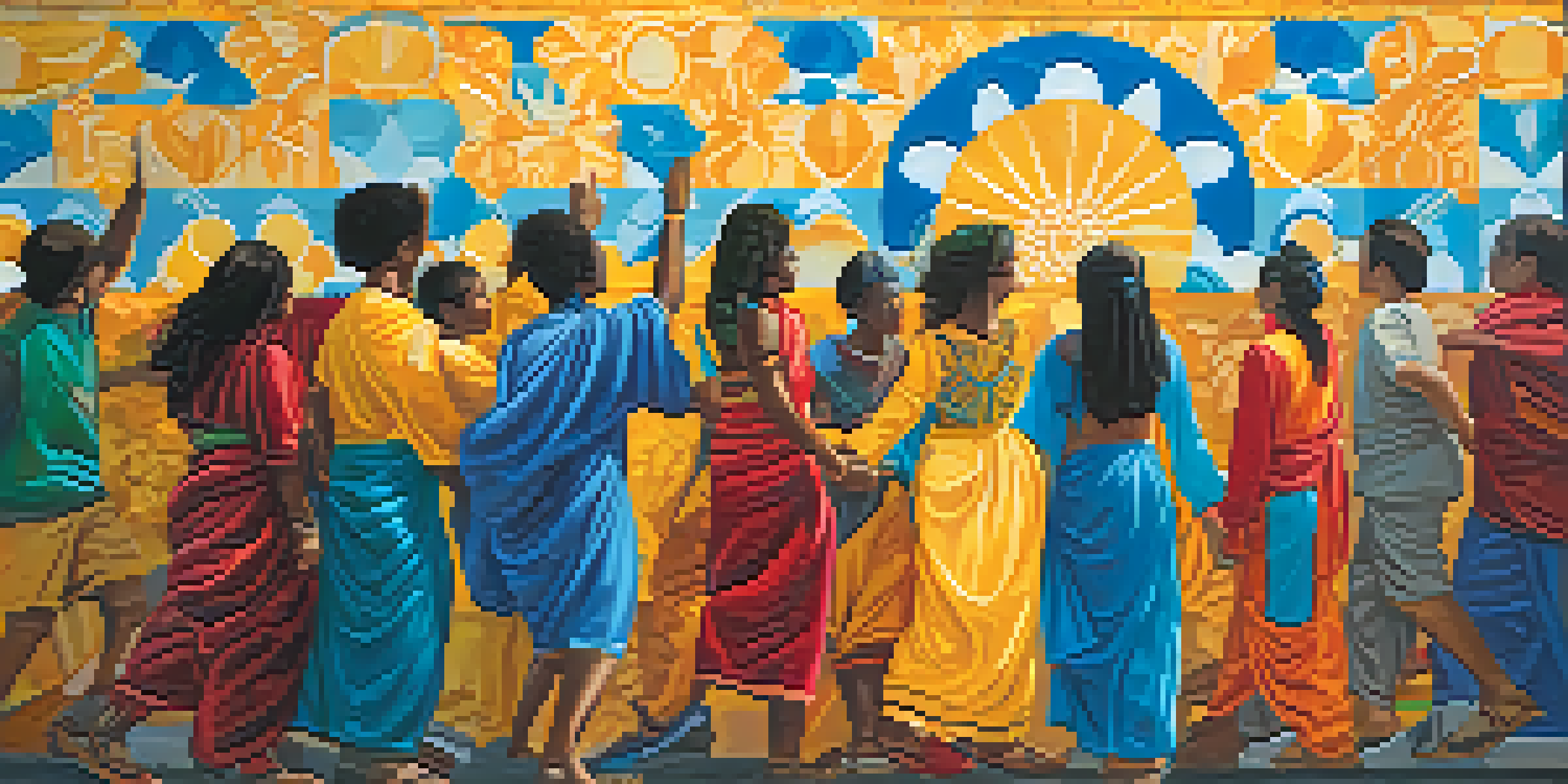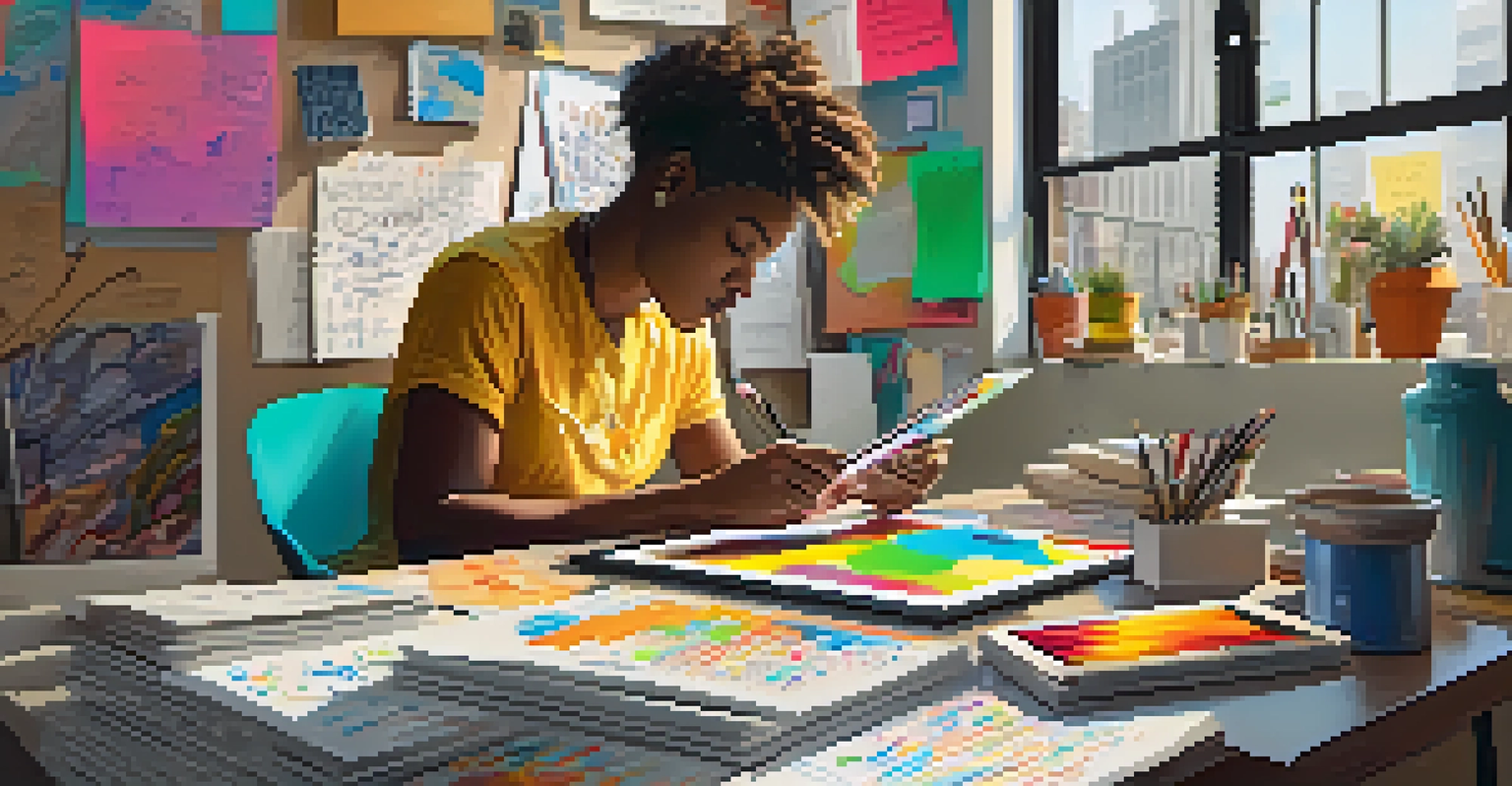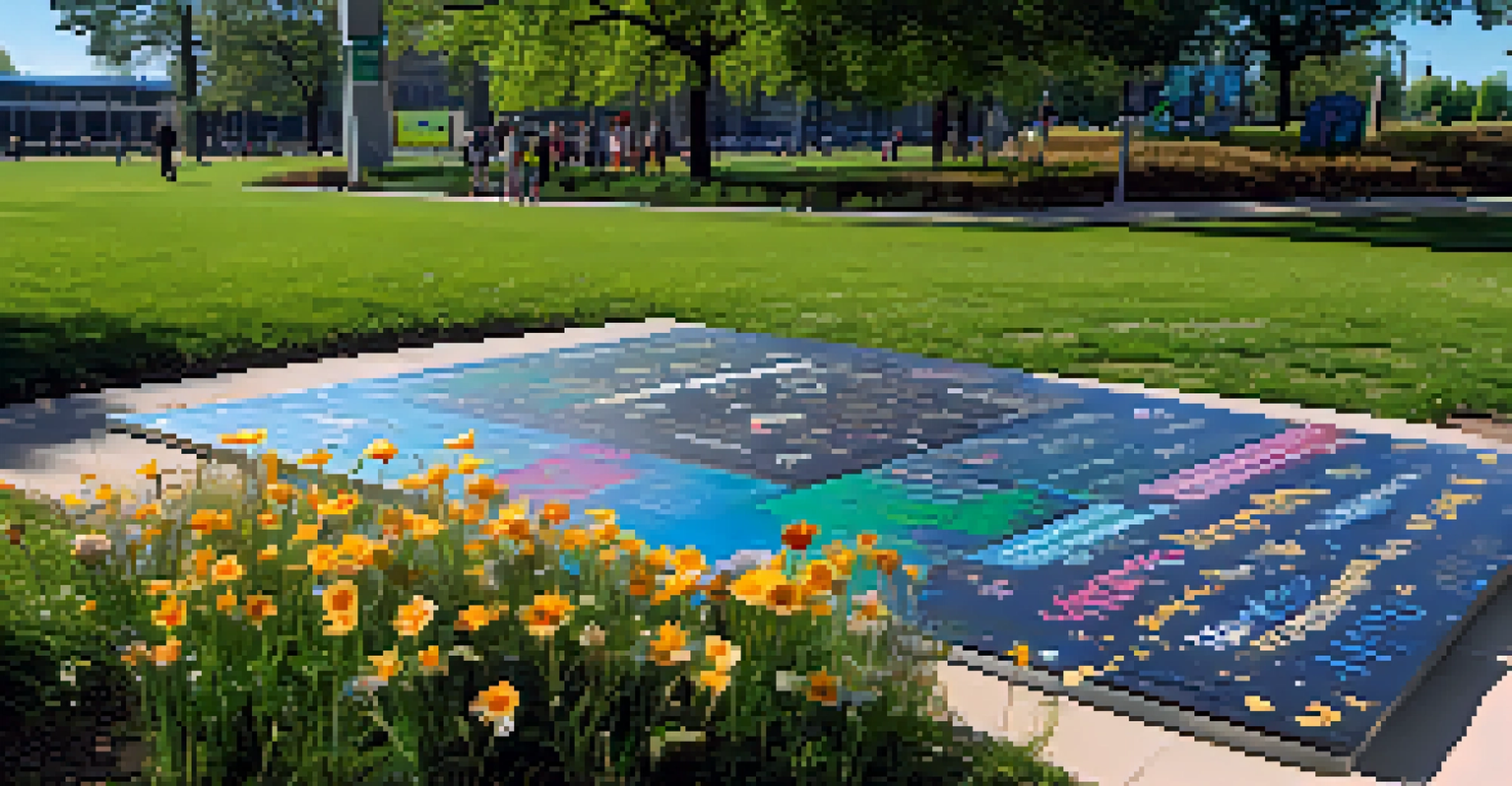The Intersection of Art and Social Justice in Cultural Narratives

Understanding Art as a Tool for Social Change
Art has always been a powerful medium for expressing ideas and emotions. It serves as a mirror reflecting society's values, struggles, and aspirations. Through various forms—be it painting, music, or literature—artists can challenge the status quo and provoke thought, inspiring change.
Art is not a mirror held up to reality, but a hammer with which to shape it.
When artists address social issues, they create a narrative that resonates with audiences on a personal level. This emotional connection can mobilize communities, fostering solidarity and collective action. For instance, street art often conveys messages of resistance and hope, pushing important dialogues into public spaces.
Related Resource
Moreover, art transcends language barriers, making complex social justice issues accessible to diverse audiences. It invites people to engage with these themes, sparking conversations that might not occur in traditional settings. By doing so, art becomes a catalyst for awareness and activism.
Historical Perspectives on Art and Social Justice
Throughout history, art has been intertwined with social movements. From the suffragette movement's banners to the protest songs of the civil rights era, artists have used their craft to advocate for justice and equality. These historical examples highlight the power of cultural narratives in shaping societal change.

Consider the work of Diego Rivera, whose murals depicted the struggles of the working class in Mexico. His art not only celebrated Mexican heritage but also served as a political statement, urging viewers to reflect on social injustices. Such examples remind us that art can document history while simultaneously pushing for progress.
Art as a Catalyst for Change
Art serves as a powerful medium that inspires social change by fostering emotional connections and mobilizing communities.
As we analyze these historical intersections, it becomes clear that art is not just a reflection of society; it actively participates in its evolution. By examining past movements, we gain insight into how contemporary artists continue to harness their work for social justice, ensuring that these narratives remain alive and relevant.
The Role of Artists in Shaping Cultural Narratives
Artists often find themselves at the forefront of cultural conversations. Their unique perspectives allow them to challenge dominant narratives and present alternative viewpoints. This role is especially crucial in today's diverse society, where multiple voices need to be heard and understood.
The role of the artist is to make the revolution irresistible.
For instance, contemporary artists like Ai Weiwei use their platforms to address pressing issues such as human rights and freedom of expression. Through provocative installations and public statements, they engage audiences in dialogues that question existing power structures. Such work emphasizes the responsibility of artists to act as social commentators.
Related Resource
By pushing boundaries and experimenting with new forms of expression, artists can create narratives that resonate with audiences from various backgrounds. This inclusivity not only enriches the cultural landscape but also promotes empathy and understanding, fostering a more just society.
Case Studies: Art in Action for Social Justice
Examining specific case studies can illuminate how art has effectively facilitated social justice efforts. One notable example is the 'Black Lives Matter' movement, which has inspired a plethora of artistic responses. From murals to performance art, creators have expressed solidarity and called for systemic change through their work.
Another powerful case is the AIDS Memorial Quilt, which transformed grief into a poignant visual representation of loss and activism. Each panel tells a story, fostering understanding and compassion while advocating for better healthcare and rights for marginalized communities. This project illustrates how art can unite people around a common cause.
Historical Impact on Social Movements
Throughout history, artists have played a crucial role in advocating for social justice, creating narratives that shape societal progress.
These case studies demonstrate that art is not a passive observer but an active participant in social movements. By harnessing creativity, artists can amplify voices, create spaces for dialogue, and drive action toward meaningful change.
Digital Art and the Modern Social Justice Movement
In today's digital age, the intersection of art and social justice has expanded significantly. The internet provides a platform for artists to share their work widely, reaching global audiences. Social media, in particular, has become a powerful tool for raising awareness and mobilizing support for various causes.
Digital art, including graphic design, video, and virtual installations, allows for innovative expressions of social justice themes. Artists can create impactful content that can be easily shared and disseminated, generating conversations that might not happen otherwise. This accessibility democratizes art, enabling diverse voices to be heard.
Related Resource
As we explore the role of digital art in social movements, it’s clear that technology enhances artistic expression. It enables artists to engage with their audiences in real-time, fostering community and collaboration across geographical boundaries. This evolution opens up new avenues for advocacy and activism.
Challenges Faced by Artists in Social Justice Work
Despite the transformative potential of art, artists involved in social justice face numerous challenges. Censorship, funding limitations, and societal backlash can hinder their ability to express critical messages. These obstacles can discourage some artists from tackling controversial subjects, potentially stifling important conversations.
Additionally, the commercialization of art can dilute its social impact, as financial incentives may prioritize profit over purpose. When art becomes commodified, the original message can be lost or sanitized, leading to a disconnect between artists and their intended audience. This highlights the delicate balance between artistic integrity and market demands.
Digital Art Expands Advocacy Reach
In the digital age, artists leverage technology to share their work widely, enhancing the accessibility and impact of social justice themes.
However, many artists continue to persevere, finding creative ways to navigate these challenges. By collaborating with communities, leveraging alternative funding sources, and utilizing digital platforms, they can maintain their commitment to social justice while pushing boundaries. This resilience is vital for the ongoing evolution of cultural narratives.
The Future of Art and Social Justice Narratives
Looking ahead, the future of art and social justice appears promising yet complex. As societal issues evolve, artists will continue to respond creatively, using their work to reflect and challenge new realities. This dynamic interplay between art and activism will shape cultural narratives in ways we cannot yet fully envision.
Emerging technologies, such as virtual reality and augmented reality, offer exciting possibilities for immersive storytelling. These innovations can create powerful experiences that engage audiences emotionally, deepening their understanding of social justice issues. With these tools, artists can craft narratives that resonate on a profound level.

Ultimately, the intersection of art and social justice will remain a vital space for exploration and dialogue. As artists push boundaries and challenge norms, they will inspire future generations to engage with the world around them, fostering a culture of empathy, understanding, and action.